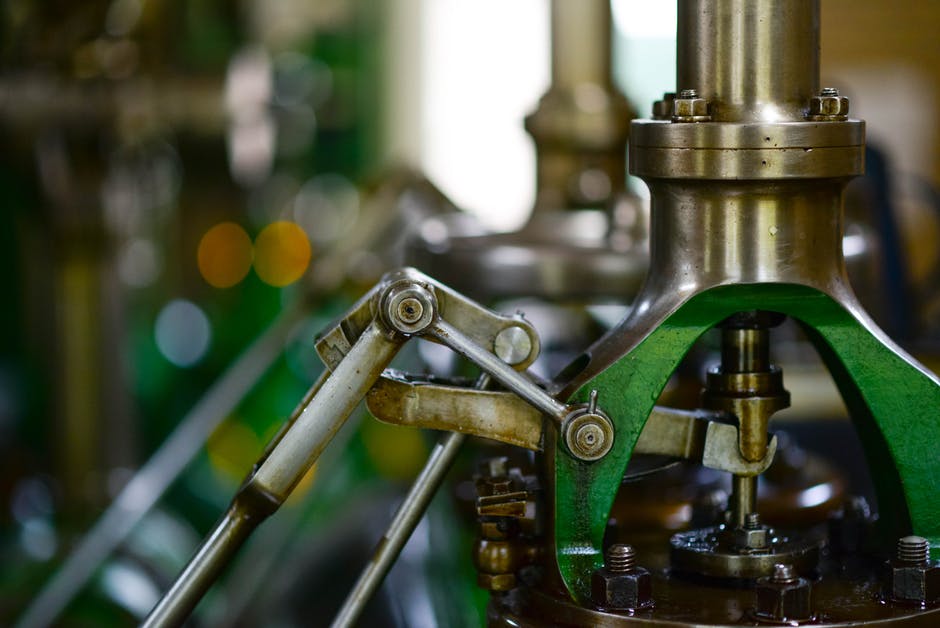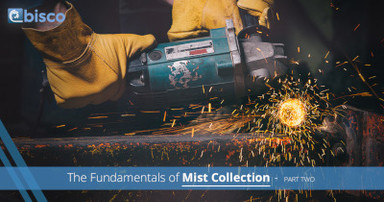Nov 15th 2017
The Fundamentals of Mist Collection, Part Two
When it comes to the metalworking and welding industry, mist collection is a critical component to the overall safety and efficiency of your operation. At Bisco Enterprise, we’re proud to be a leading provider of mist collection systems and air cleaning units for a variety of industries. In part one of this series, our experts discussed the importance of mist collection and smoke collection as well as their performance characteristics. In part two, we’ll take a closer look at some of the operation fundamentals for various types of mist collectors. If you need assistance choosing the best mist collection system for your workplace, contact our specialists today!
Operation Fundamentals For Mist Collection Systems
Did you know that mist droplets can be captured in a variety of ways? Let’s look at a few popular operation fundamentals for the various types of mist collectors available on the market today.
Electrostatic Precipitation

Electrostatic Precipitation is among the most popular types of technology behind mist collection systems. This type of mist collector works by drawing in the mist-laden air through an ionizer. This ionizer then gives each droplet of mist either a positive or negative charge. Once these droplets have been assigned a charge, they are captured by collection cells that utilize alternating high voltage and grounded plates to pull the charged droplets onto the plate. As the droplets accumulate on the plate, they eventually drain out of the collector.
There are number of advantages to using a mist collector that utilizes electrostatic precipitation. These collectors do not require the user to replace filters and they use a relatively low level of energy to operate. On the other hand, some people don’t love these mist collectors because they require frequent maintenance and upkeep. The intricate parts inside the electrostatic precipitator must be kept meticulously clean in order to maintain its efficiency for charging and capturing mist droplets.
Inertial Separation
Some mist collectors rely primarily on inertial separation to separate mist droplets from the airstream in a warehouse or manufacturing facility. As the airstream is diverted around a surface, the mist droplets have their own momentum and continue down their path, coalescing with other droplets and eventually draining. While there are several different types of inertial separation, they all have a few important things in common. Inertial separators can function without a barrier filtration mechanism. This means that they do not have primary filters and they do not need to be changed on a regular basis.
Inertial separation also works better on larger mist droplets, since the capture of these droplets depends on them not following the airstream inside of the appliance. Unfortunately, this also means that inertial separation may not be the best form of mist collection for smaller droplets that are one to two microns in diameter.
Filter Media
Many mist collectors use fibrous filter media to remove mist and smoke droplets from the airstream. There are four main filtration mechanisms involved in this process.
- Sieving - This is the predominant filtration mechanism used to collect larger mist droplets that are greater than 10 microns in diameter. Sieving occurs when a droplet is physically too large to pass between two or more fibers. When a droplet contacts a fiber, it will stick to the surface and collect with other droplets before draining from the collector.
- Inertial Impaction - This filtration mechanism is used to collect micro-sized droplets. Inertial impaction occurs as the airstream is displaced by the media fiber while the droplet continues on its original course.
- Interception is used to collect smaller droplets ranging from 0.1- to 1-micron in diameter. When a mist droplet follows an airstream but comes close enough to the fiber to stick to it, interception occurs.
- Diffusion is predominantly used to collect very fine mist droplets, usually less than 0.1 micron in size. Since these droplets are so small, they are influenced by molecular forces within the airstream which forces them to move in the same general direction of the airstream.
Browse Mist Collection Products
Bisco Enterprise is proud to offer the best mist collection systems and air cleaning solutions for a variety of industries. If you need assistance choosing the best mist collection system for your facility, contact our professionals today!

